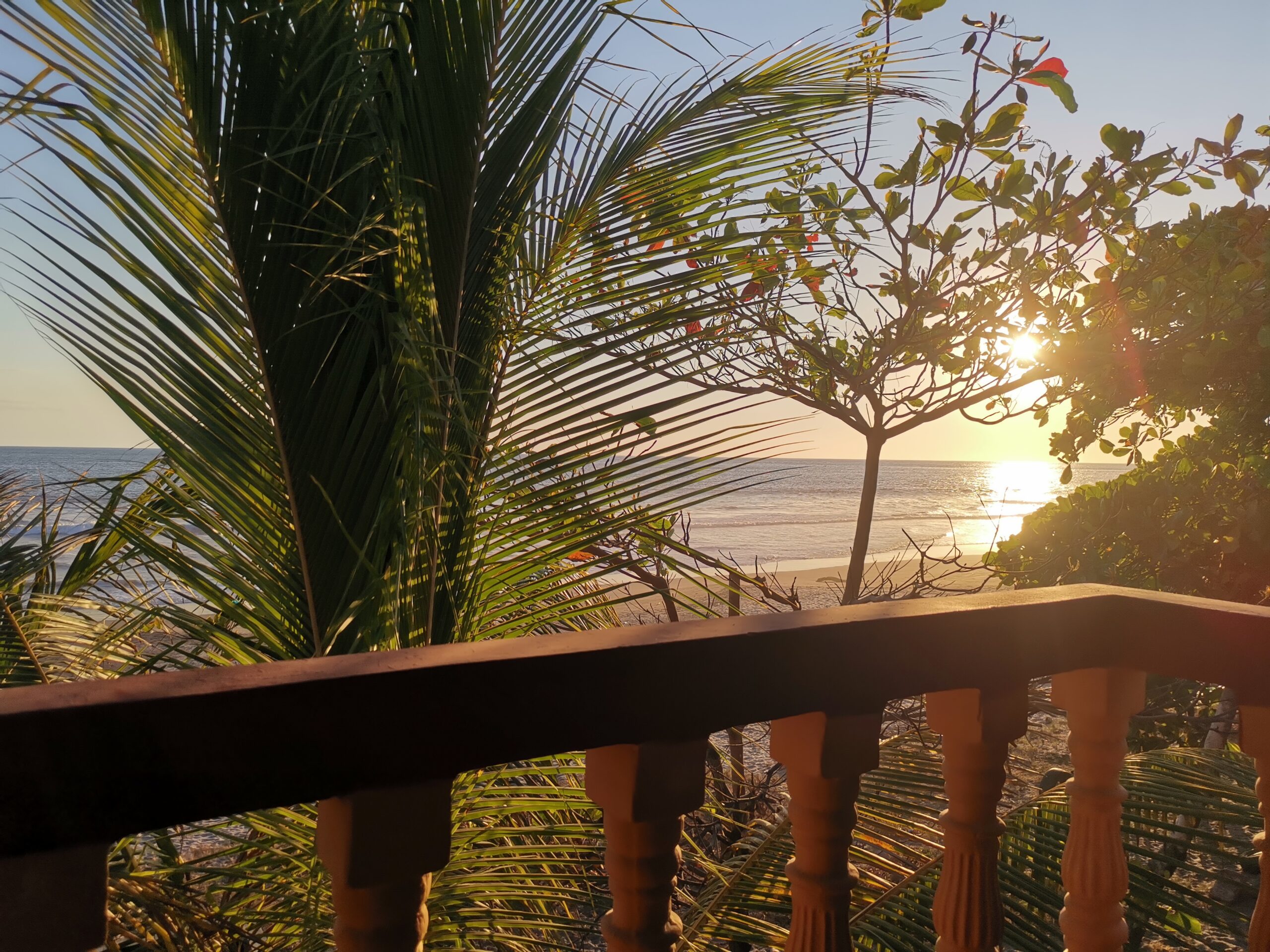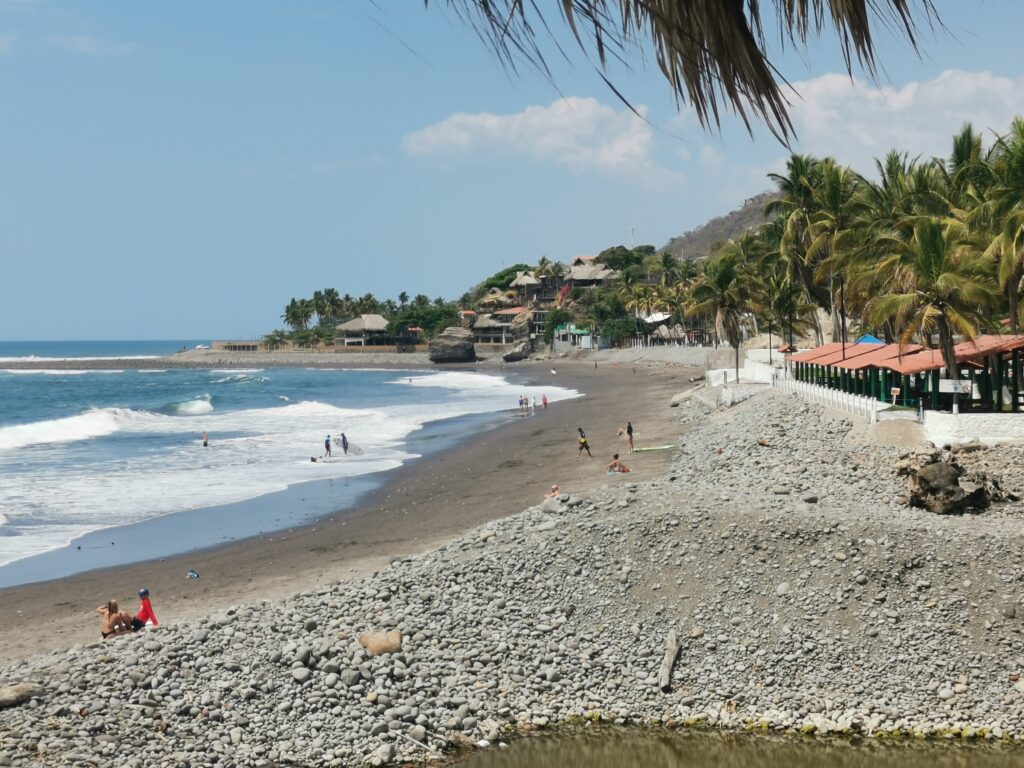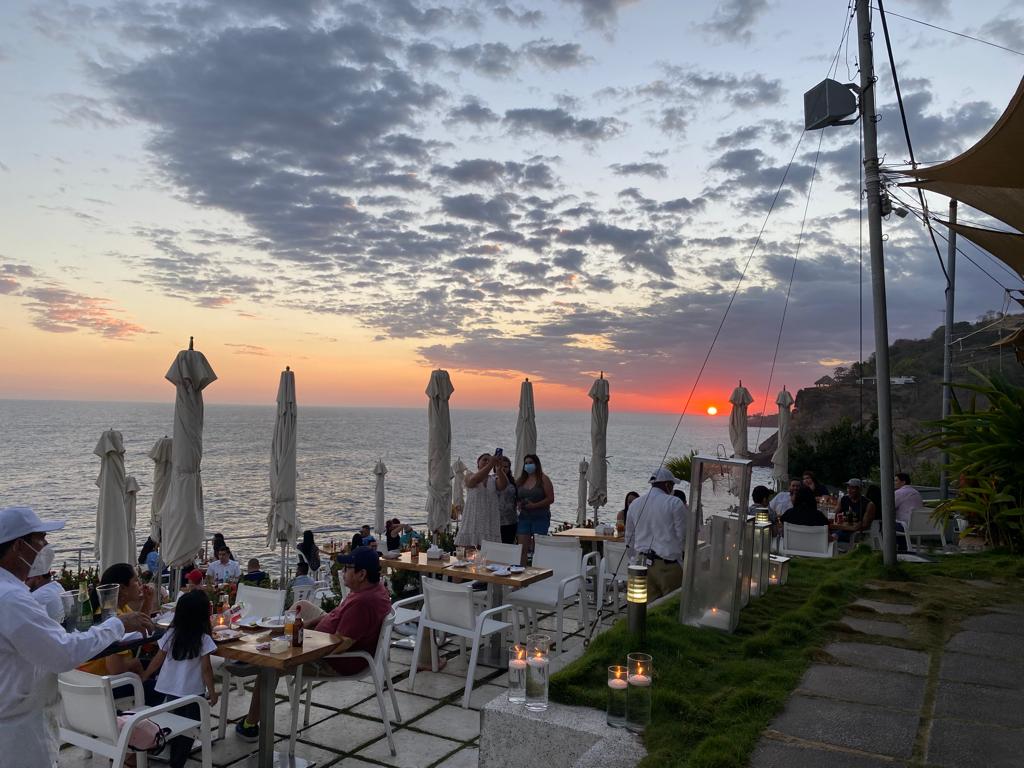El Salvador, a little nation in Central America, is well-known for its stunning beaches, volcanoes, and Mayan ruin sites. A distinctive fusion of history, culture, and natural beauty may be found there. Several locations are must-sees when travelling to El Salvador.
The Joya de Cerén Archaeological Site, dubbed the Pompeii of the Americas, is among the key attractions. This historic town, which is a part of the UNESCO World Heritage Site, was buried by volcanic ash around 600 AD. It gives tourists a peek into the Mayan people’s way of life and culture.
The Ruta de las Flores, often known as the Flower Route, is another must-visit location. Visitors to this gorgeous road pass through a number of small communities famed for their vibrant flowers and traditional crafts. It is a nice spot to pause and take in the local fare, coffee, and artwork.
El Salvador has a lot to offer those seeking outdoor adventure. You can climb the Santa Ana Volcano, one of the tallest in the nation, on foot, or you can go surfing at El Tunco Beach, one of the best beaches in Central America. El Salvador is a fantastic choice for those seeking something unusual and off the main road, no matter what their hobbies.
In this article, we will give you our suggestions on what to do and see when you visit El Salvador
Explore the Mayan Ruins at Joya de Cerén
Exploring the Mayan ruins at Joya de Cerén in El Salvador is an enthralling trip through history that provides a dramatic view into daily life in a prehistoric society. This archaeological site, frequently referred to as the “Pompeii of the Americas,” has the remains of a pre-Columbian community that were preserved beneath layers of volcanic ash.
The well-preserved ruins allow tourists to imagine the vibrant Mayan community in its heyday as they explore them. Their farming methods, social organization, and daily routines can all be deduced from the remains of their homes, workplaces, and communal areas. We are able to see how the Maya lived, prepared food, and interacted centuries ago because to the UNESCO World Heritage Site.
Joya de Cerén stands out due to its emphasis on the commonplace. This Mayan site provides a close-up view of everyday life, in contrast to other Mayan sites that emphasize massive temples and pyramids. You will obtain a comprehensive grasp of their practises and difficulties as you wander around the rebuilt structures, deepening your appreciation for the tenacity of ancient cultures.
Joya de Cerén weaves a distinctive story into the fabric of history and serves as a timely reminder of the value of conserving cultural traditions. The website encourages us to reflect on the enduring effects of earlier civilizations as well as our common human experience.
If you would like to book a tour to see the Mayan Ruins at Joya de Ceren, click here or on the Get Your Guide image below to select from one of our preferred suppliers.
Visit the Tazumal Ruins
The Tazumal Ruins are in the western El Salvador hamlet of Chalchuapa. The pre-Columbian Maya civilization’s ruins are on display at this archaeological site, which also provides tourists with a window into the area’s lengthy past. The 23-meter-tall pyramid at the location, which is from the Classic Maya era between 250 and 900 AD, is the site’s main draw. Visitors for a panoramic view of the surroundings can climb the steep steps of the pyramid.
In addition to these buildings, the Tazumal Ruins also contain a ball court, a temple, and a number of residential and ceremonial structures. Pottery, sculptures, and jewelry are among the amazing array of artefacts on display in the site’s museum.
A trip to El Salvador’s Tazumal Ruins is a must for anyone with an interest in history or archaeology. For those looking for a peaceful vacation from the bustle of contemporary life, the site’s distant location and serene surroundings make it the perfect choice.
If you would like to book a tour to see the Tazumal Ruins, click here or on the Viator image below to select from one of our preferred suppliers.
Hike to the Santa Ana Volcano
One of El Salvador’s most popular hiking locations is the Santa Ana Volcano, popularly known as Ilamatepec. It is the highest volcano in the nation at 2,381 meters high and provides amazing views of the surroundings.
With its steep inclines and rocky terrain, the walk to the top of the Santa Ana Volcano is difficult, but it is also tremendously rewarding. Hikers will traverse a number of environments throughout the route, including forests, farmland, and volcanic ash landscapes. They might also run into various animals, such foxes, rabbits, and birds.
Hikers will be rewarded with breath-taking panoramic views of the surrounding area, including Lake Coatepeque and the Pacific Ocean, at the volcano’s summit. It is even possible to see neighboring nations like Guatemala and Honduras on clear days.
For outdoor aficionados visiting El Salvador, the hike to the Santa Ana Volcano is a must-do excursion. It provides a distinct perspective on the nation’s natural beauty and is a challenging but memorable experience.
If you would like to book a tour to hike to the Santa Ana Volcano, click here or on the Klook image below to select from one of our preferred suppliers.
Joya de Cerén Archaeological Site
El Salvador’s Joya de Cerén Archaeological Site is a remarkable example of ancient history and a time capsule of everyday life. Joya de Cerén, known as the “Pompeii of the Americas,” provides a unique look into the lives of the native people who lived in the area around 600 AD. The site, which was buried by a volcanic eruption, was extraordinarily well-preserved and offered priceless insights into Mayan culture.
Joya de Cerén exploration is like travelling through time. The surprisingly intact remains of their homes, storage facilities, and workshops provide a close-up look at how these people lived, worked, and interacted. Pottery, tools, and artefacts reveal extensive information about their trade, customs, and farming methods.
The importance of the site resides in its capacity to close the knowledge gap between ancient and modern cultures. Visitors can imagine daily activities, observe evidence of culinary methods, and experience the cohesiveness of the community. The UNESCO World Heritage Site improves our understanding of the history of the area by providing a direct link to the past.
A true archaeological gem, Joya de Cerén provides a unique opportunity to immerse oneself in the life of individuals who are long dead. Its discovery and preservation serve as a reminder of the value of knowing our history and appreciating the rich cultural diversity of the Americas.
Ruta de las Flores
The gorgeous road trip Ruta de las Flores passes through the lush coffee fields and quaint communities of El Salvador’s western highlands. The communities of Juayua, Apaneca, Ataco, and Ahuachapán are all located along this gorgeous route’s 36 km length. For those who want to experience the nation’s natural beauty and culture, it is the perfect place to go.
Beautiful mountain scenery, tumbling waterfalls, and an abundance of coffee farms may be seen on the journey. Even though every town has its own distinct charm, they all have colonial architecture, cobblestone streets, and bustling markets selling handcrafted pottery, textiles, and trinkets.
The Ruta de las Flores not only features breath-taking scenery, but also provides opportunities for outdoor pursuits including hiking, birdwatching, and mountain biking. Along the way are two other attractions that are worth visiting: Cerro Verde National Park and the Los Volcanes Complex.
Overall, for anyone visiting El Salvador who wants to experience the natural beauty and culture of the country, the Ruta de las Flores is a must-visit location.
El Tunco Beach
El Tunco Beach, located along El Salvador’s gorgeous coastline, is a hidden gem that skillfully combines unspoiled beauty with a relaxed environment. Travelers looking for the ideal balance of excitement and relaxation are increasingly attracted to this picturesque seaside location. El Tunco, known for producing reliable waves, has become a haven for surfers from all over the world. The beach offers optimal conditions for catching that ideal wave, whether you’re an experienced surfer or a newbie eager to ride the waves.
Beyond the waves, El Tunco’s lively coastal neighborhood has an attractive atmosphere. Fresh seafood and native Salvadoran meals are served in quaint cafés, beach bars, and neighborhood restaurants. It is a paradise for anyone wishing to unwind because of the environment of fellowship and leisure.
The waves that crash against the shore are illuminated by a warm glow during the sunsets at El Tunco, which are nothing short of spectacular. With local attractions like volcanic treks and natural springs that provide a view of El Salvador’s varied landscapes, this tropical refuge also begs for exploration.
El Tunco Beach embraces the spirit of adventure while capturing the essence of a laid-back beach vacation. It’s a place that draws you in with its allure and leaves you with memories of days spent in the sun, waves you’ll never forget, and a tranquilly that stays long after you’ve left its beaches.
Suchitoto
In El Salvador’s Cuscatlan district is the lovely colonial village of Suchitoto. It is a well-liked destination for travelers looking to experience authentic Salvadoran culture because of its cobblestone lanes, vibrant homes, and old architecture.
The community is renowned for its creative and cultural offerings, which include a yearly arts festival, an indigenous art museum, and a thriving market where regional craftspeople sell their handmade wares.
Lake Suchitlan, a sizable reservoir that provides lovely vistas and leisure activities like fishing, boating, and kayaking, is one of the main draws in Suchitoto. Visitors can also take a boat tour of the lake to learn about its history and witness the various bird species that call the area home.
Suchitoto has a diverse food scene, with several restaurants selling classic Salvadoran cuisine like pupusas, yuca frita, and sopa de gallina, in addition to its cultural and environmental attractions.
Overall, Suchitoto is a must-see location for anybody visiting El Salvador since it offers a distinctive fusion of history, culture, and natural beauty.
8. Try local Cuisine and Coffee
Delicious food from El Salvador, which combines indigenous, Spanish, and other foreign elements, is well-known throughout the world. Pupusas, which are substantial tortillas stuffed with beans, cheese, and meat; yuca frita, which is fried cassava served with tomato sauce; and sopa de res, a robust beef soup with vegetables, are some of the most well-liked dishes.
Coffee from El Salvador is another delicacy you must try. Due to its rich volcanic soil and favorable growing circumstances, the nation is renowned for producing some of the best coffee in the world. Those interested in learning more about the production of coffee, from growing and harvesting to roasting and brewing, can take a tour of a coffee plantation. Additionally, they can try some of the various coffee varieties and buy bags to take home.
Overall, anyone visiting El Salvador should definitely try the local food and coffee. It is a wonderful and genuine method to learn about the customs and culture of the nation.
If you would like to book a cooking class in El Salvador, click here or on the Klook image below to select from one of our preferred suppliers.
9. Festivals in El Salvador
El Salvador, a small but culturally significant nation in Central America, is home to numerous lively festivals that highlight the country’s vivid traditions and strong sense of community. The annual “Fiesta de San Salvador,” which honors the patron saint of the nation’s capital, is one of the most eagerly anticipated events. This week-long festival includes a variety of mouth-watering regional specialties, vibrant parades, traditional dances like the “Danza de los Diablitos,” and religious processions. The city comes alive during this time with music, laughing, and a strong sense of pride.
The “Carnaval de San Miguel,” held in the eastern city of San Miguel, is another well-known celebration. This funfair is a fascinating show including colorful costumes, ornate floats and raucous street celebrations. Traditional musical genres like the “Cumbia” and “Punta,” with their rhythmic pulses that echo through the streets, draw in both locals and visitors.
The “Day of the Dead” holiday, a deeply ingrained custom enjoyed all around El Salvador, is also observed. Families come together at this time to honor and commemorate their departed loved ones. In houses and cemeteries, colorful altars are made and decorated with marigolds, pictures, favorite meals, and sentimental items. It is a period of introspection when it is thought that the living and the dead unite spiritually.
These celebrations in El Salvador not only offer a venue for cultural expression, but they also strengthen a sense of community and identity. They welcome visitors to immerse themselves in the unique fabric of Salvadoran culture while also providing a window into the nation’s history, folklore, and indigenous roots.

















